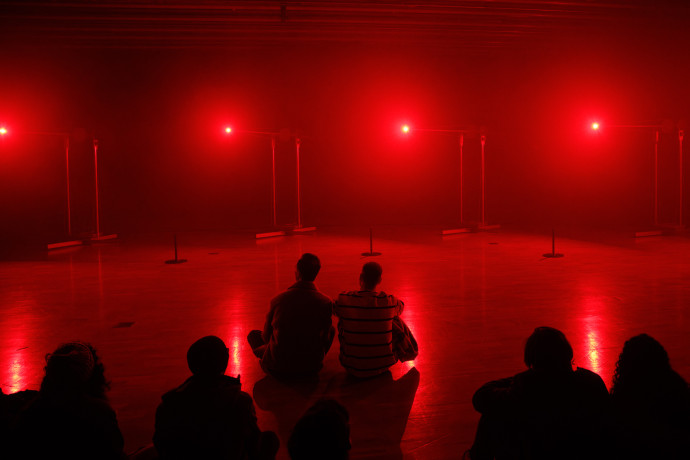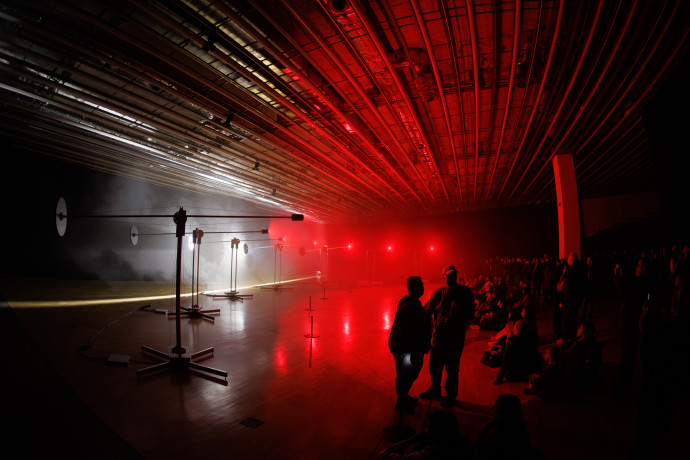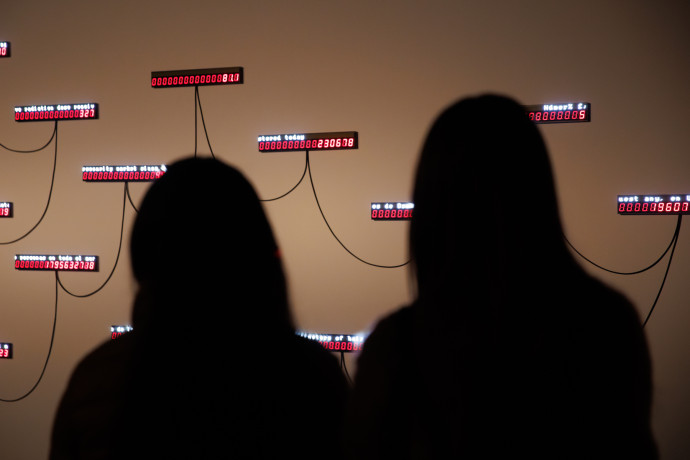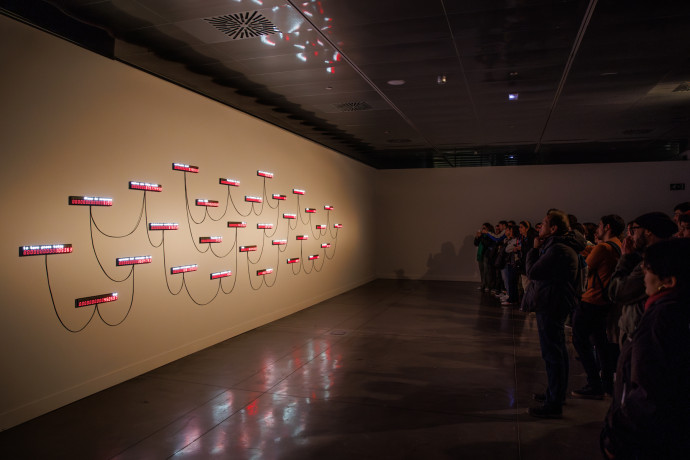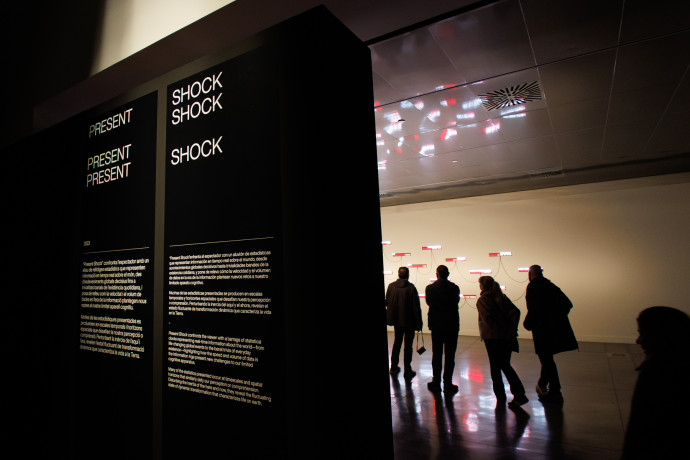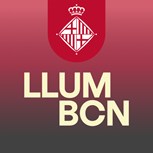
Llum BCN 2024 app
Check the installations near you, create itineraries, receive notifications and much more.
Patterns and Recognitions. A three-part composition by United Visual Artists
2024
Artists
Disseny Hub Barcelona - C. Irena Sendler, 1
Special visiting hours:
Friday the 2nd, 7 pm to 11.30 pm.
Saturday the 3rd, 10 am to 5 pm and 6.30 pm to 11.30 pm.
Sunday the 4th, 10 am to 5 pm and 6.30 pm to 11 pm.
From 5 February to 17 March, there will be an entrance fee for the exhibition (see the DHub website for prices and opening hours).
The central proposal of Llum BCN’24 is the triptych Patterns and Recognitions, which brings together three projects by the London-based studio United Visual Artists (UVA), created by artist Mark Clark. This triptych is inspired by the music of the spheres (“Silent Symphony”), the Renaissance perspective (“Vanishing Point”), and the weight of data in the information age (“Present Shock”).
‘Silent Symphony’
Inspired by Ancient Greek philosophers’ belief that the universe produced an inaudible type of music, the project traces resonant frequencies and synchronicities that occur on a cosmic scale and explores how they relate to our sense of harmony. Eight custom kinetic sculptures cast rotating planes of light and sound across the room. Oscillating between order and chaos, the beams of light slice through space, creating complex patterns and interactions with the architecture. The work physicalises invisible energetic forces, such as gravity, giving them form as light and sound.
‘Vanishing Point’
This installation, inspired by Renaissance perspective drawings, employs perspective as a tool to reshape and redefine a space, continuing UVA’s explorations into programmable architecture and creating the illusion of light as a physical material. Beams of white light are projected from an invisible vanishing point, drawing different divisions within the room and transforming our sense of perspective. The behaviour of the work is unpredictable, fluctuating between calmly flowing beams of light and more energetic movements. The functional, architectural quality of the three-dimensional sound field enhances these compositions.
That light installations may NOT BE advisable for people with special visual or hearing sensitivity.
The laser beam from the installation can cause damage to the camera of the mobile device.
‘Present Shock’
The proposal confronts the viewer with an avalanche of statistical clocks representing real-time information about the world, ranging from life-changing global events to the banal trivia of everyday existence, highlighting how the speed and volume of data in the information age pose new challenges to our limited cognitive apparatus. Many of the statistics presented occur on time scales and spatial horizons that challenge our perception or understanding, revealing the fluctuating and dynamic state that characterises life on Earth.
United Visual Artists (UVA) is a London-based studio founded in 2003 by British artist Matt Clark. Its work integrates new technologies with traditional mediums such as sculpture and performance. From ancient philosophy to theoretical science, it explores the conceptual frameworks and natural phenomena that underpin our cognition. Its creations range from small-scale pieces to large-scale sculptural installations for public spaces. Its research lines include the tension between real and synthesised experiences, the questioning of our relationship with technology, and the creation of phenomena that transcend the purely physical. The studio has been commissioned by institutions including The Curve - Barbican Art Gallery, Victoria and Albert Museum, Royal Academy of Arts, Serpentine Gallery, The Wellcome Trust, The British Library, Manchester International Festival, YCAM in Japan, and the MoNA Museum in Tasmania. Its permanent works can be seen in Toronto, Dubai, and Philadelphia. It has collaborated with artists such as Massive Attack on their live projects, choreographer Benjamin Millepied and the Paris Opera Ballet, sound artist Bernie Krause, and theoretical neurobiologist Mark Changizi.

